This year, we have been experiencing a terrible winter here in Paleochora. Getting around has been problematic with land slides, rock falls and rivers busting their banks which all have caused many roads to be closed and even washed away completely.
So, we will break from local walks this month, and tell the story of how we travelled from sea-level at Paleochora to around 4500m (15,000 ft) on the slopes of the world’s highest peak – Mount Everest, 8848m / 29,028 ft – though now often referred to as Chomolungma, the Sherpa name, or (in Nepali) Sagarmatha.
The “we” was an international team of Michelle, Karin, Lindsey, James and myself, all living locally here, joined by Avril (Chania), Colin (UK) and Uta (Germany) all regular visitors to Paleochora.
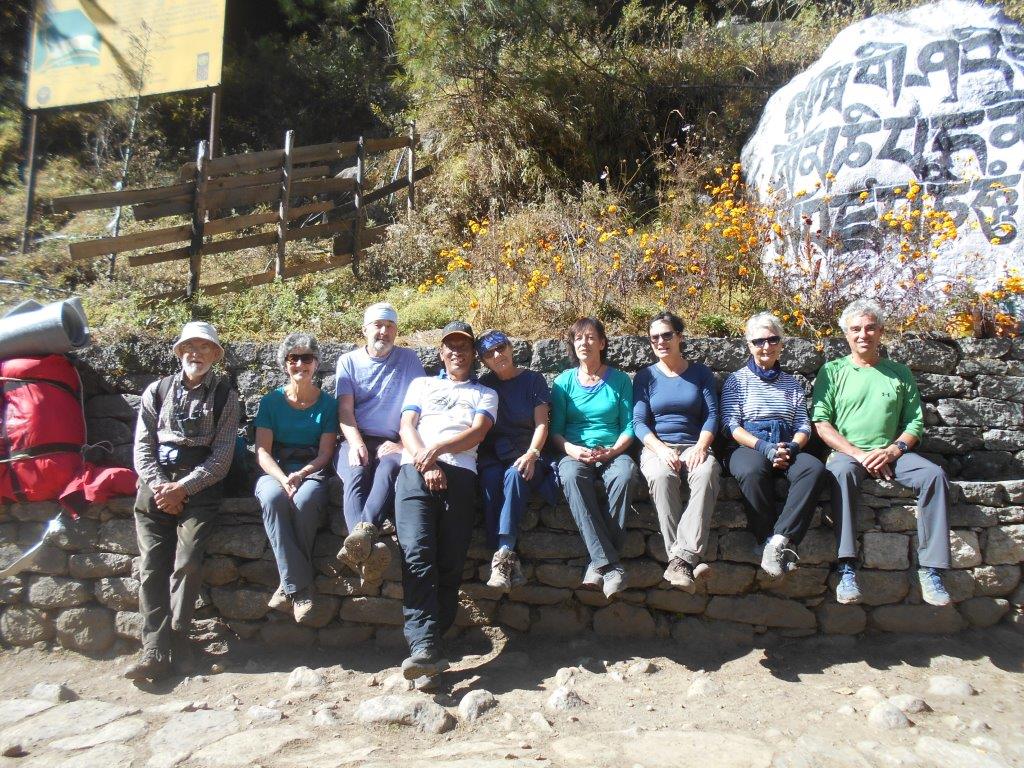
The team
Flying from Athens, London and Berlin, we all met up in the noisy, chaotic, congested and polluted Thamel district of Katmandhu, where the Hotel Holy Himalaya is thankfully situated down a quiet side-street. Two days later, with our Sherpa guides Lakpa and son Norbu, we took a 30-minute flight to Lukla – generally accepted as the world’s most dangerous airport – with a sloping runway (at 11.7%), only 527m long, at 2845 m above sea level.
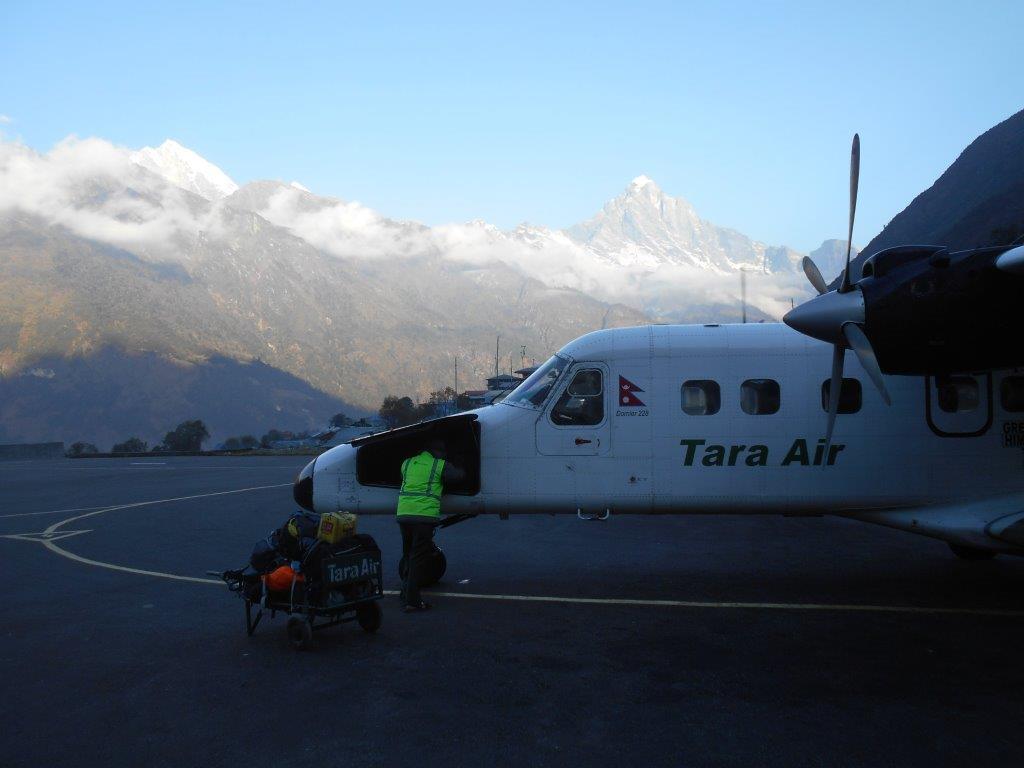
Lukla Airport
For most, from there it’s a two-day trek up to Namche Bazar, but to better acclimatise, and respecting our advancing years (our average age was 66,) we took three days, staying overnight in simple “lodges” at Phakding and Josale.
Now inside the Sagarmatha (Everest) National Park, the 700m steep climb to Namche took us alongside, then over and 70m high above the Dudh Koshi river by a spectacular steel bridge, swaying slightly as we crossed ….
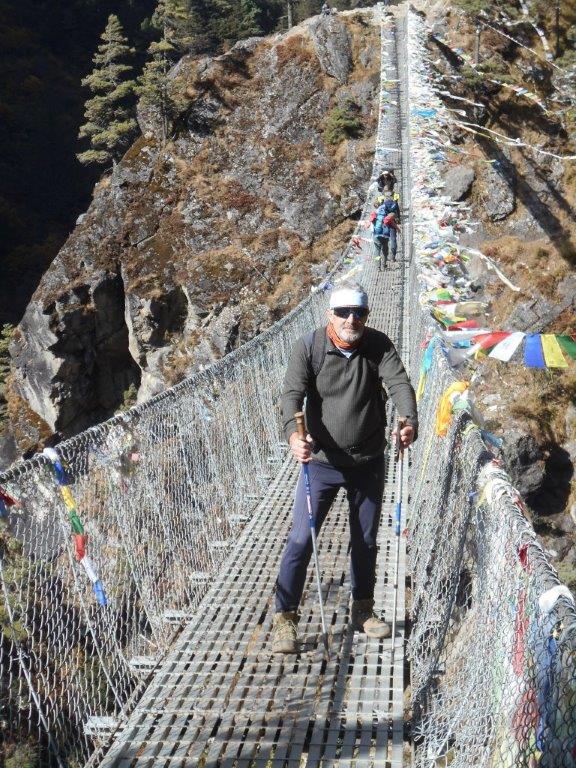
Bob risking life & limb
Namche is in the heart of the Solukhumbu region, homeland of the Sherpas, most notably Tenzing Norgay, who reached Everest summit with Edmund Hillary in 1953. From Namche we headed west, to Thame – and a rest day, with just an hour’s climb to visit an isolated monastery high above the village.
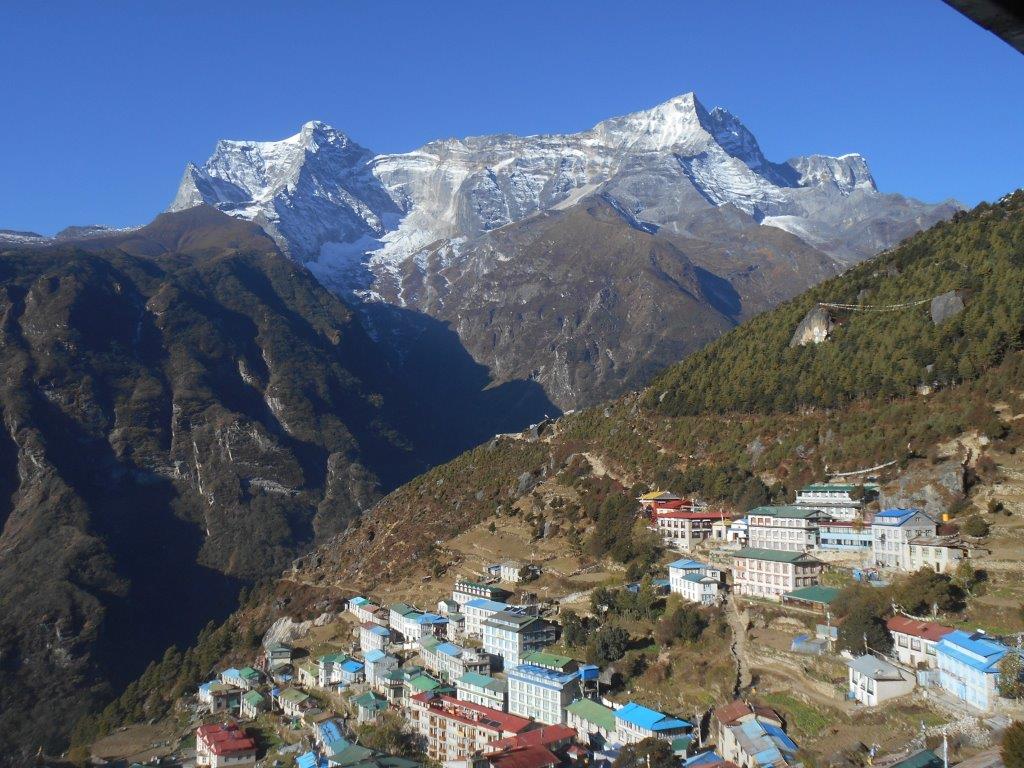
Namche Bazaar
Then, in successive days, to Khumjung, Phortse and Pangboche, at 3930m, every day bringing us closer to the peaks of Thamserku (6608m), Kangtega (6685m), spectacular Ama Dablam (6856m), Lhotse (8393m), and Everest itself.
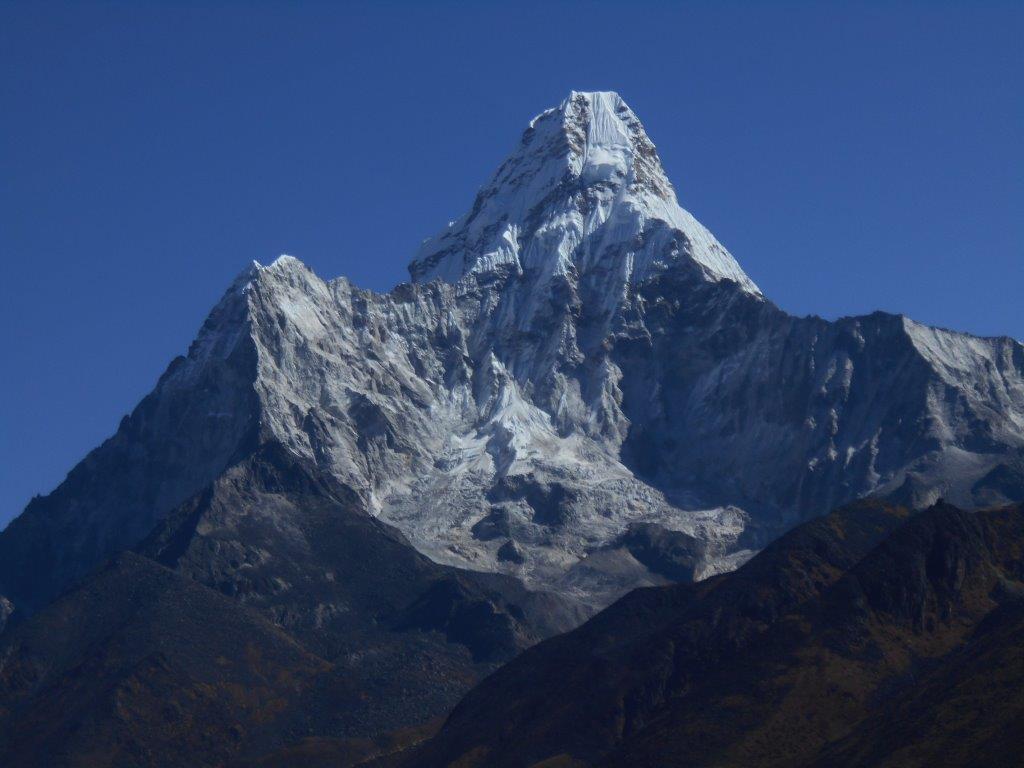
Ama Dablam
Pangboche was high enough for some, but five of us continued up to Dingboche, at 4410m, spending a (very cold) night in the ‘Ama Dablam’ lodge, sub-zero outside, but with an inside fire fuelled by yak-dung.
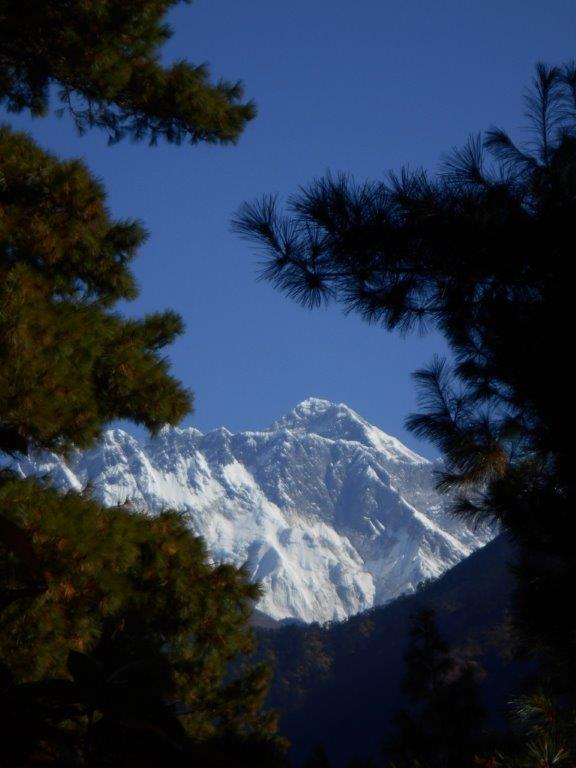
Everest
We climbed to a splendid viewpoint above the village next morning, our high-point of 4395m or 14,417 ft, then back down to Pangboche, and from there, in two days and by different paths, to Namche.

View from Kumchung
En route was Tengboche, the most important and best-known Buddhist monastery (but not the oldest, that was at Pangboche, where we were shown the skull and hand-bones of a Yeti.) And so back down to Lukla, the views still stunning and surprisingly different in reverse.
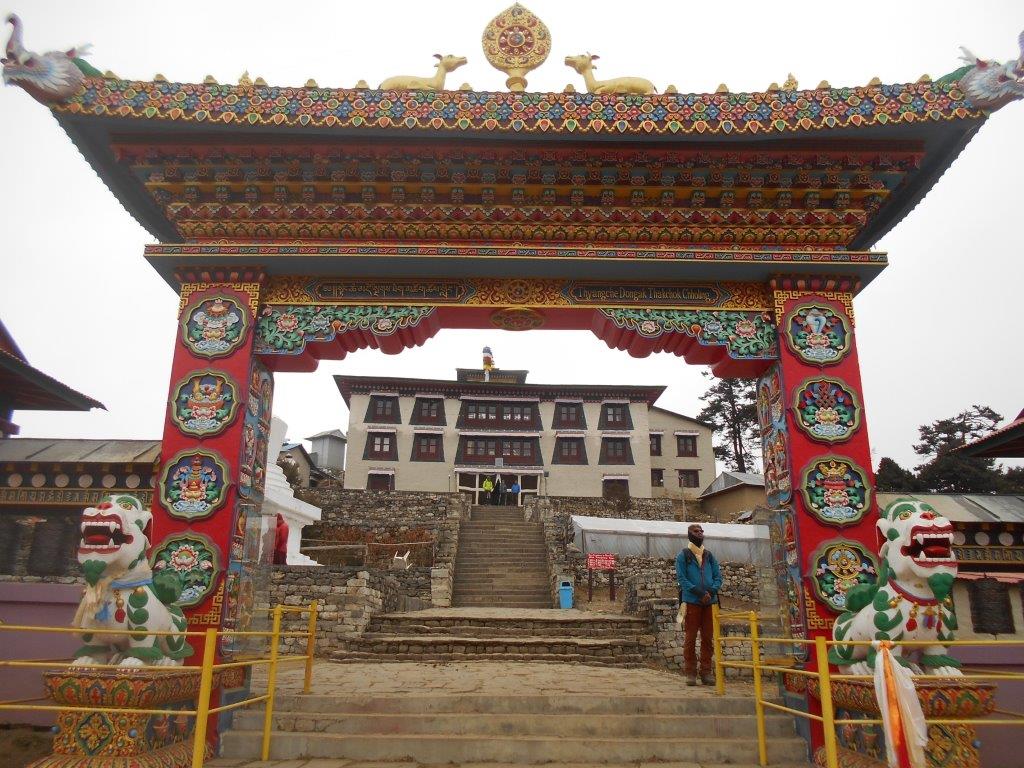
Tengboche
But at Lukla our luck ran out ; poor weather in Katmandhu resulted in several flights being cancelled, including ours … until the next day, when a re-arranged flight took us to Ramechhap, and then a 4-hour bus journey, scenic, though on rough roads, into Katmandhu.
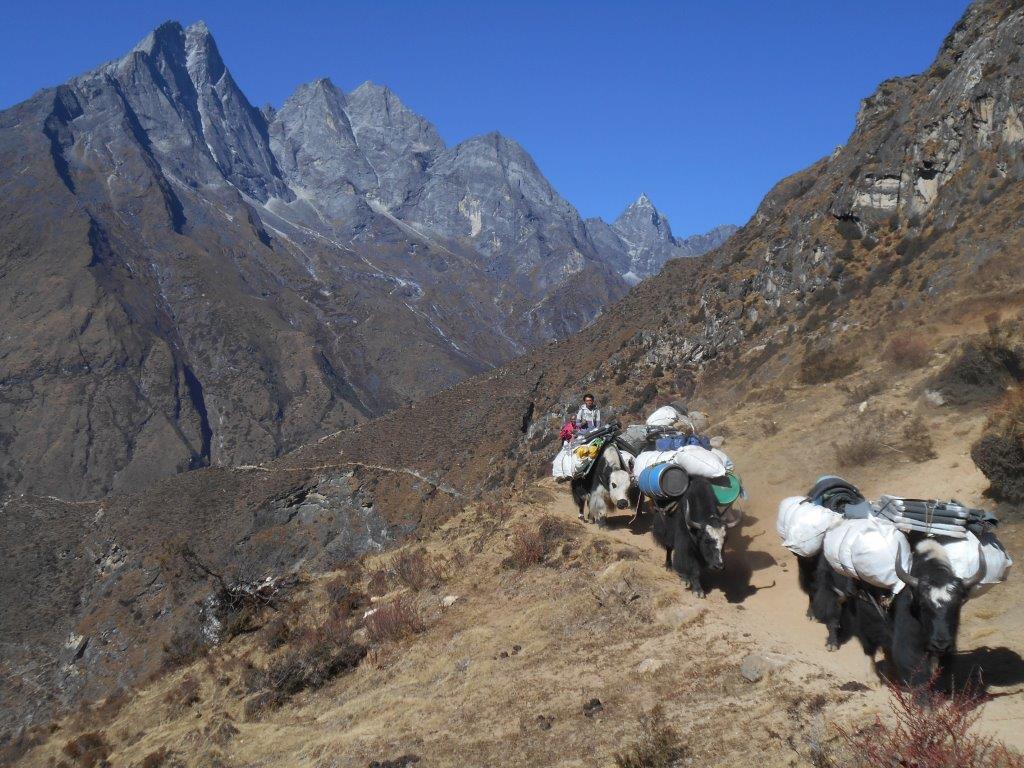
Yak train
But we travelled hopefully, and arrived there in time to rest and relax, before our flights home – James, Colin and Lindsey to Heathrow, Uta to Berlin, the rest of us to Athens and then over to where “ our island home is far beyond the waves; we will no longer roam … ”
But of course we will.
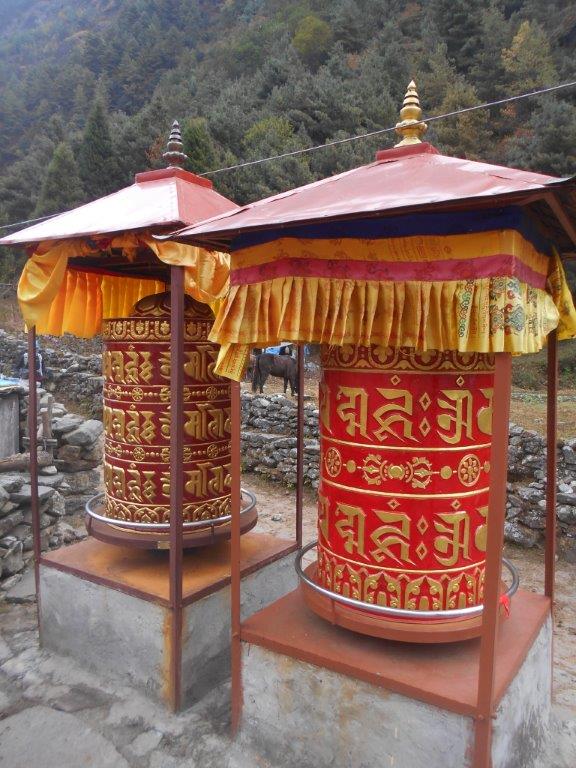
Prayer wheels
As on our previous “expeditions” to Nepal and Bhutan, “ for a while we have lived simply and happily, we have adventured well …” This time, at close to 4500m, we reached half the height of Everest ….. but in truth the second half, to the summit at nearly 9000m, looked far more difficult.


1 comments
Good to see the flame of adventure still burning brightly, Bob. Hope to see you in Uppermill this year. Spare bedroom available. Best wishes. D&M